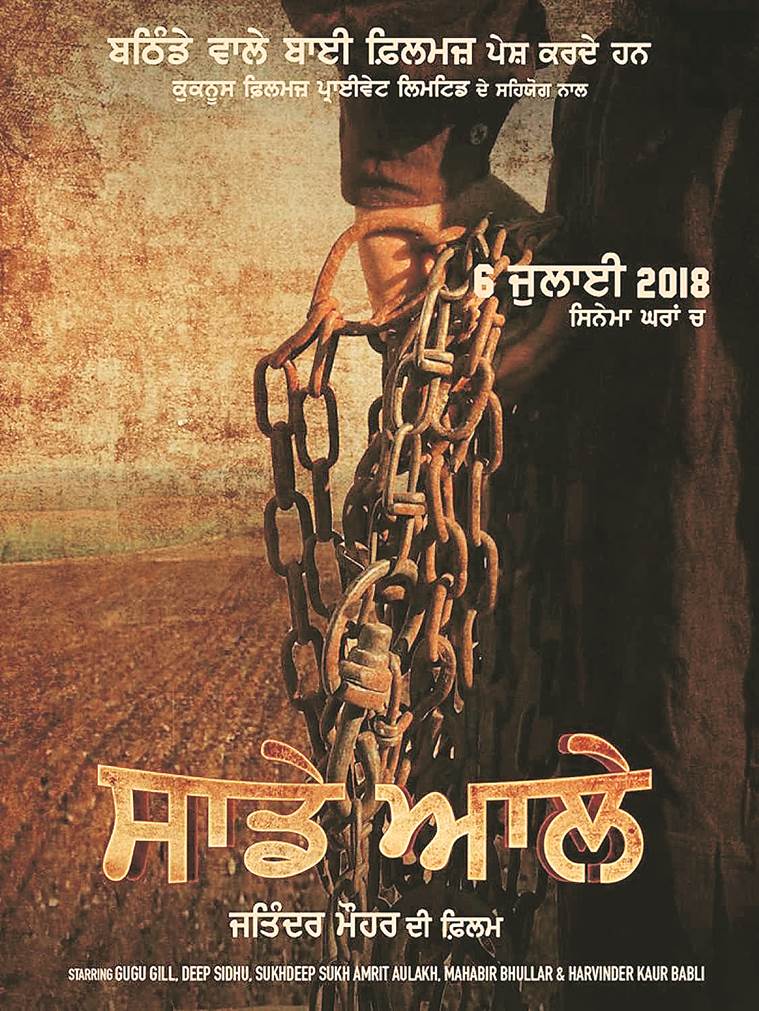 Jatinder Mauhar with Sikander actor Gul Panag.
Jatinder Mauhar with Sikander actor Gul Panag.
A simple philosophy guides Punjabi writer-filmmaker Jatinder Mauhar’s work — if you have to write something, you should feel, be restless, be in touch with what’s around you and most importantly, intervene for what you want in society. Precisely why Mauhar has bravely stayed away from comedies and romcoms that Punjabi cinema is known for. As a writer and film director he has chosen to portray Punjab in the here and now, bringing the audience in touch with reality.
While Sarsa looked at how the state has been reduced to nothing because of corruption, power and politics, Sikander closely examined power play and manipulation at the university level. Mitti showed the distress of the youth and the critically acclaimed Qissa Panjab got people up, close and personal with the hopes and despair of the youth.
“It is a choice I have made to share with common people stories that are theirs. I believe cinema is one of the most effective mediums to make us think. I make films in the language of the people; it’s for them. No matter what the odds, some of us have to break the stereotypes that Punjabi cinema is plagued with, and if things are not changing, we need to make an effort to change them,” says Mauhar, who recalls how until he was 25, he had no idea what he was going to do.
From making music videos to a short documentary on migrant labourers in Punjab, and a career in the textile industry, Mauhar says a workshop by the National School of Drama, Delhi, exposed him to world cinema and inspired him to start writing scripts. “Since childhood, I was keen on Punjabi literature, and exploring rural Punjab, meeting common people, farmers and farm labourers. It gave me a deep insight into our world, and the issues we face, be it crime, drugs, gender violence, corruption that has led to farmer suicides, and land grabbing. As artistes, it is our responsibility to bring these realities to light,” says Mohali-based Mauhar, who agrees that it is very tough to convince producers to says yes to his scripts and ideas. “We have made small films, so our audience is small. In the past, we have produced average content so how will Punjabi cinema be on par with other film industries. It is a constant battle and I am willing to fight it.” Talk about digital platforms which are encouraging new filmmakers and writers, Mauhar asks where is the content in Punjabi?
 Poster of Saade Aale
Poster of Saade Aale
Currently, the filmmaker is looking forward to another dialogue with the audience, with his new film Saade Aale, set in Malwa and Sangrur, all set for release. Based on a story by Balwinder Grewal, it is a story of love, which Mauhar feels we need in this time of strife and hatred. The film looks at a long-standing feud between two families. The central characters are the two younger sons of the families, who play kabbadi and are in same team. “The story takes us thought the many emotions that the sport brings out in these two young boys, the impact it has on the families and how sports can make us better individuals, bring out the goodness in us and make us see beyond just ourselves. No one in this world is doosra, the others are our very own and the film strives to create this connect,” says Jauhar, who has written the screenplay, dialogues and directed the film.
The director says it is a powerful story, and he hopes that Punjab likes this. “I want people to say yes, this can happen. The need is for realistic cinema, perspectives which are not narrow and the constant effort is to create space for such work. Soon, I hope to work on a project which will recreate the past of Punjab and initiate debates and dialogue.”